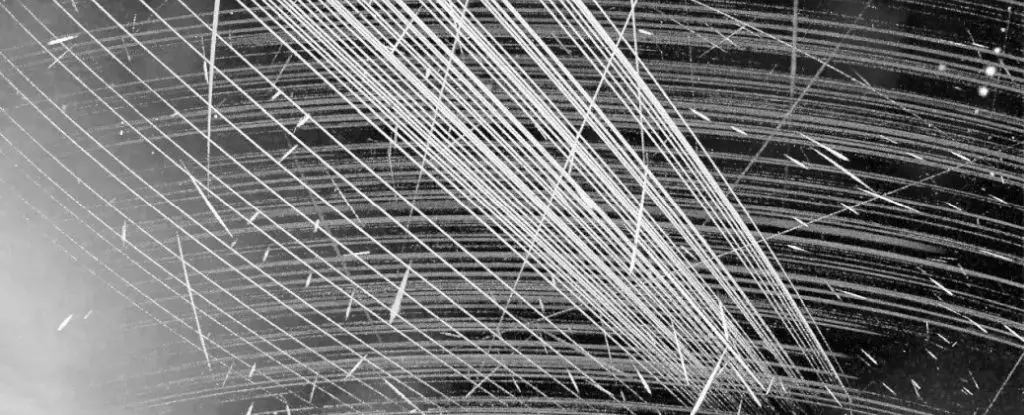The burgeoning presence of satellite swarms around the Earth, particularly those associated with SpaceX’s Starlink, raises pressing concerns for scientific endeavors, especially in the realm of radio astronomy. The latest generation of Starlink satellites, designated as v2mini, have exacerbated the issue of electromagnetic radiation leakage, raising alarm among astronomers and researchers globally. This article examines the implications of these developments, the potential for regulatory changes, and the need for collaborative efforts between satellite operators and the scientific community.
Recent reports indicate that the v2mini variants of Starlink satellites are leaking radiation at alarming levels, as much as 32 times more than earlier models. This radiation is predominantly within radio frequency bands designated for radio astronomy, a critical field dedicated to the study of astronomical phenomena. Cees Bassa, an astronomer at the Netherlands Institute for Radio Astronomy (ASTRON), underscores the severity of the situation, comparing the unintended emissions from the satellites to the brightness of the full Moon as opposed to the faintest stars discernible to the naked eye. With 6,398 satellites currently in orbit and SpaceX continuing to launch around 40 additional units every week, astronomers are left to grapple with an increasingly blurred signal as they attempt to observe the cosmos.
The implications of satellite-generated radiation extend beyond mere inconvenience; they threaten the very foundation of radio astronomy. Instruments like LOFAR (Low Frequency Array) rely heavily on unfettered access to specific radio frequency bands to capture signals from distant cosmic objects. Unfortunately, a recent study utilizing LOFAR to analyze emissions from 97 Starlink satellites revealed that these satellites emit radio waves in the 110-to-188 MHz frequency range. This is particularly disconcerting because it intrudes upon the designated 150.05 to 153 MHz range used for scientific observations, creating a noisy environment that drowns out faint signals from the universe.
With the rapid proliferation of satellite technology encompassing various entities—from OneWeb with its 634 satellites to Amazon’s proposed deployment of over 3,000, and even China’s aim for 15,000 satellites—light and radio pollution are becoming critical issues. While the visible streaks left by these satellites during nighttime observations are already a widely discussed topic, the growing concern among researchers highlights the pressing need for action to safeguard the integrity of radio astronomy.
Currently, the absence of stringent regulations governing the accidental emissions from satellite constellations poses a significant challenge. Researchers advocate for the implementation of guidelines that would address this burgeoning issue. Each new satellite introduced into low-Earth orbit amplifies the cumulative effect of interference, painting a grim picture for the future of radio observations. With no existing legislative framework to control these emissions, the call for regulatory oversight has never been louder.
The scientific community, including figures such as ASTRON director Jessica Dempsey, is pressing for a balance between technological advancement and the preservation of the night sky’s scientific usability. There is a consensus that while the satellite industry has a vested interest in mitigating their unintended emissions, regulatory bodies must play an active role in establishing limits and guidelines to protect celestial research.
Experts advocate for immediate actions from both satellite manufacturers and regulatory authorities. Engineers like Federico Di Vruno of the SKA Observatory highlight the necessity for satellite companies, particularly leaders like SpaceX, to prioritize sustainable practices by minimizing radiation leakage in their operational frameworks. The dialogue between the aerospace industry and the scientific community is crucial; it necessitates a shared commitment to maintaining the integrity of our observational resources in space.
As humanity stands on the precipice of unprecedented technological growth in satellite communication, we must not overlook the potential consequences it has on our understanding of the universe. The synergistic relationship between advancements in radio astronomy and daily technologies like Wi-Fi and navigation systems should serve as a reminder of the broader implications of interfering with radio wavelengths.
As satellite swarms continue to proliferate with existing and new players in the market, it is paramount that we take concerted steps to preserve the night sky for future generations of astronomers and explorers. By fostering cooperation and establishing legislative oversight, we can protect the valuable insights that radio astronomy offers into the cosmos—insights that serve not just scientific inquiry, but enhance our technological capabilities here on Earth.


Leave a Reply